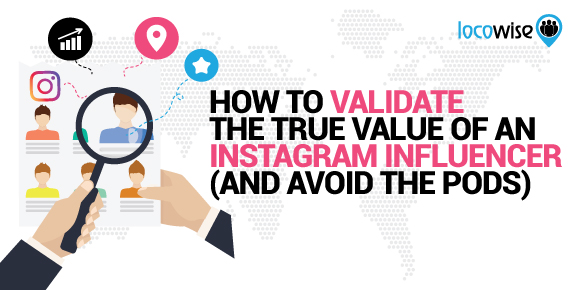What Does Influencer Marketing Look Like In 2020
Sahail Ashraf posted on 10 March 2020
If anyone is even remotely interested or engaged with social media, they will know what Influencer Marketing is. The rise of the Influencer can probably be attributed to two platforms, YouTube and Instagram. When people started to gain fame and interest on these platforms, and their audiences would regularly turn up to see what they were doing, it made perfect sense to add some selling to the situation.
However, things are becoming a little more complicated, and it seems that the Influencer of today is very much expected to handle things a little differently to the Influencer of a couple of years ago. We are going to take a look at Influencers, and how their job may change in the year ahead.

Appropriate?
Remember when Logan Paul did that horrible thing in the forest in Japan? We will spare you the details, but let’s just say it was very insensitive. YouTube suspended their links with Paul for a while after that story broke.
We think that incident has some huge consequences for Influencer Marketing. In 2020, it will be more important than ever for brands to match themselves up with Influencers who are aligned with their values and audiences. Logan Paul still has a huge audience, but that audience will have lost some weight as brands realised that he was way out of thier own ‘comfort zone’.
The 2020 version of influence will have a clear tone. We see the year being one that offers brands a simple choice. They either wise up to the fact that Influencers need to meet their brand message dead centre, or they risk having Influencers that could bring low ROI, or even a serious amount of damage to their public image.
The quality thing
The Influencer market has undergone a number of changes. However, one of the most important aspects is the quality of the Influencer brands might approach. Excitingly, this aspect actually makes Influencer Marketing an area that can still be lucrative for brands in 2020, even for brands with a smaller budget.
How so? Well, the ‘whales’ of Influencer Marketing, like Logan Paul, are now very much established and out of reach for many brands. It’s even fair to say that this level of Influencer is irrelevant for brands now anyway. The area is saturated.
The smaller level Influencers, sometimes referred to as ‘Micro-Influencers’ is where it’s at for many brands today. The problem is related to the fact that influence is measured incorrectly by some brands. A brand may, for example, find an Influencer who has 100k followers and think that they have hit the jackpot. But that Influencer, even with 100k followers, may have much less influence than you think.
The true indicator of influence is action. If an Influencer can move her audience to action, make them buy something or sign up to something, that is true influence. The original Influencer model rested upon people causing others to buy something through endorsement. If that Influencer with 100k followers doesn’t make sales, she is not a true Influencer. In 2020, expect the whole concept of true influence to be re-evaluated.

Closer to home
Influencers are everywhere, but brands will also start to notice those advocates that are closer to their core activities. A brand has customers, and it may well be time to use that loyal base of people who have actual influence.
Using testimonies from customers and offering them incentives to endorse the products and services on their own social media accounts makes perfect sense. It’s down on the ground, and that kind of endorsement will probably work quickly. While it may not reach millions of people, it will reach real people who trust the ‘Influencer’.
Pair this kind of work up with endorsements from employees and you have a developing Influencer network that will ignore fashion and trends, and will be completely about people who love a product.
In fact, we would go so far as to say that this is one of the key areas for brands to focus on in 2020. With budgets being downsized, it will be even more important to find true ROI with Influencers. This ‘second tier’ of Influencers will be even more consistent in the long run, as brands continue to treat them well and customers become even more delighted with the product or service being delivered. Sure, this is the old ‘brand ambassador’ idea, but when that whole customer-focused concept came about, customers weren’t as active on social media as they are now. To make a strong approach to Influencer Marketing in 2020, go right back to those brand ambassadors and treat them like Influencers. Chances are, they will have as much influence as many of the current mid-level Influencers out there. They may even have more.
The takeaways
It’s important to remember that Influencer Marketing is changing. Trust, alignment and true quality are the vital factors in a brand’s success.
If brands focus on what will work for them, and take the larger, more famous Influencers with a pinch of salt, they should be able to navigate the 2020 Influencer landscape with more ROI, and a solid public image.
Whether you’re using Influencer Marketing or not, you’re reading this because you live a social media marketing life. Make life easier with solid metrics that keep you in the picture. Try Locowise, and we will give you a week for free.



